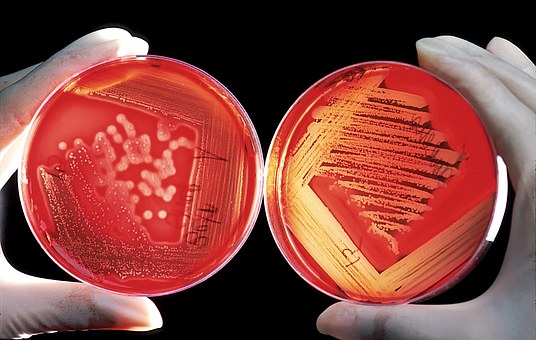Who cares about germs we can’t even grow?
Well the answer is, everyone. It turns out we can only grow about one or 2% of all the germs on planet earth. That means, all we can really study are those germs.
You know, we thought we knew all the germs. We found 100 different ways to grow germs to where we could figure out what kind of germ we had living in a particular organ or fluid.
But while there are a thousand kinds of cars, all we were discovering were the armored cars.
Let me use that as a metaphor that you need to understand.
I’m going to take a “culture“ of roads to figure out what kind of life forms are on it. So I take a great big scoop of the surface and I drop it 10 feet onto a great big platform to study (also known as an agar plate). Growth media shall we say. The thing is, somewhere in there I’m dropping this great big scoop of ‘road’ and vehicles 10 feet onto the platform creating “difficulty” so to speak. And the only thing that “grows” or survives at that point our armored cars, and dune buggy’s.
So the people studying the face of the planet earth come to the conclusion that the only two things on the planet earth are armored cars and Dune buggy’s. And a couple of tanks. Don’t forget the tanks.
Many years later, someone comes along with the ability to check for auto parts on the growth media. Not cars and trucks but just auto parts and they realize that for all of these years they’ve been dropping hundreds of kinds of cars onto the auger media but nothing grew. They found parts from Dodge, Ford, Chevrolet, Mercedes, you name it and suddenly the world opened up to the idea that there were 1 million cars.
Once they realize there were 1 million cars they couldn’t even detect they started looking for auto parts in other places and they even found parts of many cars in the brain which was at one time thought to be “sterile” but in fact contains thousands of functioning germs. We just couldn’t grow them. Why are these germs “OK“ to live in the brain, or the heart muscle? We’d like to know, but we can only detect them, not grow them.
Let’s get back to bacteria. Science has figured out that the germs in your gastrointestinal tract can control things from your hormones, to your mental attitude, certain behaviors, but especially your immune system.
Sometimes the germs simply produce a cytokine that goes to the liver and stimulates an enzyme system that fights cancer.
Lots of times, the germs in your gut just keep the immune system in fighting form holding the line against these germs getting into the bloodstream. But the more preservatives that you eat and the less healthy you eat, the harder it is for these germs to live, and the less stimulation there is to your immune system from an emptying gut.
If you take an antibiotic, you may eliminate everything except a couple bacteria. Think of how many functions are left un-done when you only have a couple of bacteria types left.
We’ve always known that funguses can produce chemicals like penicillin to combat bacteria, but now they are starting to realize that some of these mystery germs can kill other bacteria. That (it turns out) we need one bacteria in our skin to keep the other bacteria in check. But how can you study this phenomenon if you can’t even grow those germs?
And that is why we care about the germs we cannot grow. Because as yet, there is a wild west of germs and their function is yet unknown in this bacterial world that we live in, and that we are made up of.






